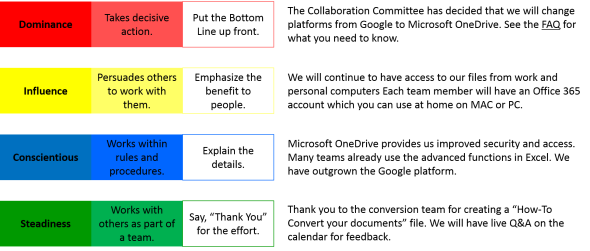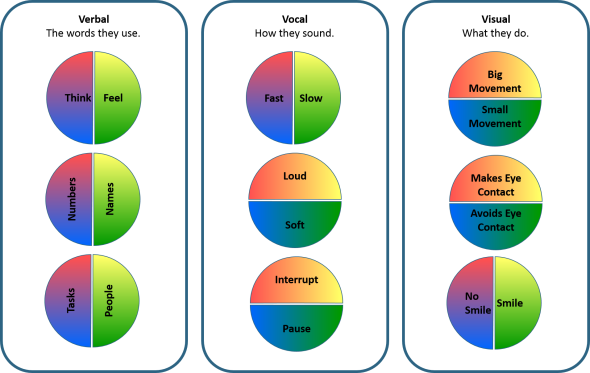Which is Better? Deciding between two options with slightly asymmetrical criteria.
Posted: August 12, 2017 Filed under: Uncategorized | Tags: Decisions, Game Leave a comment Set-up your choice box like Tic-Tac-Toe
Set-up your choice box like Tic-Tac-Toe
Let’s say that you want to make a choice. The choice is not like “Tapioca or chocolate pudding?” which is a choice between two options that relies on one factor, taste. Let’s say that the choice is from among a variety of options, and you need to rate them on two criteria. How do you do that?
For decisions such as this, you can use a quick tic-tac-toe grid. Read the rest of this entry »
The Book of Five Rings
Posted: August 12, 2017 Filed under: Uncategorized | Tags: Book, Business Leave a commentSet Up
In a recent post, I reviewed a few popular teachings from U.S. Navy SEALs. I remember a time when required business reading included The Book of Five Rings, by Miyamoto Musashi, which essentially encouraged excellence in all things. Read the rest of this entry »
Lessons from U.S. Navy SEALs
Posted: August 8, 2017 Filed under: Uncategorized | Tags: Book, Business, Manager Leave a comment Set Up
Set Up
There is a recent infatuation of business managers studying the U. S. Navy SEALs for lessons on organizational behaviors and achieving success. Like all of the military’s special forces, Navy SEALs are highly capable individuals who practice execution within a team. Their high profile exploits are achieved through specific tools and behaviors that we can relate to. Read the rest of this entry »
AI Collaborator
Posted: August 1, 2017 Filed under: Uncategorized | Tags: Game, Lean Leave a comment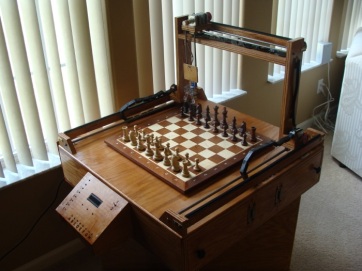 What’s link between The Twilight Zone and Garry Kasparov? Artificial Intelligence.
What’s link between The Twilight Zone and Garry Kasparov? Artificial Intelligence.
Image from Patrick McCabe Makes
Set-up
On early morning television, I watched the classic Twilight Zone episode The Brain Center at Mr. Whipple’s (Season 5, Episode 33). The short IMDB description is:
A heartless CEO completely automates his factory and lays off almost all of his workers over the objections of his employees.
The episode presents a depressing view where improvement means elimination of jobs. I am sometimes mistaken for this guy because help people improve their workplace.
Immediately after I listened to this podcast from Harvard Business Review, How AI Is Already Changing Business, (HBR IdeaCast: 586). This interview discusses all of the good things that are happening with AI, and helps us put the technology in perspective by highlighting what it cannot do — that is, create.
Interestingly, both sources come to the same conclusion, as Mr. Serling says:
The point is that, too often, Man becomes clever instead of becoming wise; he becomes inventive and not thoughtful; and sometimes, as in the case of Mr. Whipple, he can create himself right out of existence.
Game Rules
While Mr. Whipple was trying to integrate automation into his factory, what you really see is ersatz Artificial Intelligence over 50 years before the current conversation. We have been worrying about the machines taking over for a while now, yet we continue to persevere.
On the one hand, we wish that AI would take over some forms of information management, like SIRI or ALEXA. On the other hand, we do not want to become obsolete machines in the next industrial revolution. It seems that we are trying to strike a balance between freeing AI and properly subjugating it to our will.
Win Condition
A colleague of mine is working to create a knowledge base that helps machine operators make associations regarding what the machine is telling us, what I call the telemetry (he calls it by a corporate acronym). The system that we are working to implement is more like that described by Grandmaster Garry Kasparov in his TED Talk, Don’t Fear Intelligent Machines. Work with Them. Kasparov is probably known more for his losses to the machine Deep Blue than for his wins against Anatoly Karpov to become World Champion at the age of 22.
In his TED talk, Kasparov contends that the greatest innovations to come are from a collaboration between people and computers where the collaboration is more or less equal with humans providing the creativity and machines providing the raw processing power.
This is how I expect to win with computers:
I don’t try to automate anything that I cannot already do. I try to automate things that I can do and a computer can do better.
Communicating to Personality
Posted: July 22, 2017 Filed under: Uncategorized | Tags: Game, Organizational Behaviors, Personality Leave a commentSet-Up relationships by knowing your communication style
There is a personality test available that allows you to understand the things that others see in your communication style. Knowing this about yourself and others is important to having effective communications. When people are really listening — because you are speaking in a way that they like to hear — your message more often translates to a stronger inter-personal relationship and immediate action.
I use the Color Wheel designations, but you can also use the DISC method. As you will see from the game below, you don’t need to know the model to start trying this out.
The Game is to build relationships by knowing your audience’s communication style.
When meeting someone new, have you ever really, “hit it off” from the start? Your communication style is very compatible, which makes for an enjoyable conversation. Alternately, are there those people that you must interact with that you find tedious and difficult? In this case, you may need to make some more effort in order to be understood.
This game is not to mirror or mimic your conversational partner, it is more to align with them, like two boats navigating to come along side each other.
See the behavior graphic below. When you observe a specific “tell” put a mental mark on that side of the color wheel. The quadrant with the most marks is the color you are dealing with.
For example: 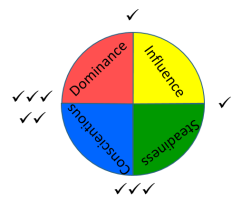
- I speak in technical terms (numbers, tasks, thinking). That is the LEFT side.
- I modulate my tone (slower, softer, pauses). That is the BOTTOM
- I have big arm movements (TOP), and I smile reactively (RIGHT), but I don’t make eye contact too much (LEFT).
As you can see from my marks, I tend to Conscientious or Blue (BOTTOM, LEFT).
How can I win friends with this?
I try to understand my audience. I watch them, and try to determine what personality they are in today — sometimes it is different. Then, I try to play to their behaviors.
- When talking to Dominance personalities, I stop before I finish explaining, giving them an opening to interrupt with questions they want to ask.
- When talking with Influence or Steadiness personalities, I try more social conventions. I may talk about the people involved or how I can help.
The best way for me to win is to work out what I am going to say and put it in the right order. See this e-mail example, but this also works if you are going to talk to a small group about an idea that you really want to do.
Rule Books
| Presentation (These Graphics) | Brian Suyat, Color Wheel / DISC Behaviors |
| Tool | Manager Tools, DISC Profile |
| Tool | Insights Discovery, Color Wheel |
The Effective Executive
Posted: July 16, 2017 Filed under: Uncategorized | Tags: Book, Management, Organizational Behaviors Leave a commentSet Up
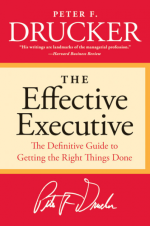 Peter Drucker may be the most quoted business writer of all time. Every business class, research article, or management book I have read somehow references his wisdom. Over fifty years ago, Mr. Drucker established the basic behaviors of successful executive managers, and we continue to learn them over in our day and age. The Manager-Tools podcast recommends reading this book at least once per year.
Peter Drucker may be the most quoted business writer of all time. Every business class, research article, or management book I have read somehow references his wisdom. Over fifty years ago, Mr. Drucker established the basic behaviors of successful executive managers, and we continue to learn them over in our day and age. The Manager-Tools podcast recommends reading this book at least once per year.
Game Rules
In his 2004 article (he died in 2005 at the age of 96) in Harvard Business Review, What Makes an Effective Executive?, Drucker continues to refine his original concepts. The three that I look to most often are:
Do what is best for the organization
Drucker looks to people’s strengths and how those strengths could be turned to best benefit the organization. He focuses on the contributions of team members that deliver the organization’s desired results. In the Prezi, you see that the only weakness that matters is, “Would I let me son or daughter work with this person?” Every other weakness is acceptable because we must accept those in order to get the strengths that are important to the organization. Our opinions of people are secondary to their results.
Make Decisions, develop Action Plans
Drucker wants effective decisions. He would often create disagreement to his ideas in order to listen to opposing viewpoints. He did not like team leaders to say, “Yes, sir.” Having disagreement provides options, and options ensure that there is a best decision as well as an alternate, Plan B, if necessary.
Run productive meetings
The best example of Drucker running meetings is his ability to focus on one thing at a time. If everything is a priority, then nothing is a priority. His ideal meeting discusses one topic at a time, makes a decision and an action plan, then determines a time to check on progress.
A deeper resource for meetings is Let’s Stop Meeting Like This by Dick Axelrod.
See George Ambler, in his blog Helping Leaders Grow, 5 Habits of Effective Executives, for another summary on Drucker’s ideas.
Winning Strategy
When I teach Drucker, it is usually in the context of making decisions and following-up on progress. In my mind, this is the one skill upon which all other management techniques rely.
• Before you Make Decisions in a meeting, encourage disagreement and respectful debate.
• When you Make Decisions, do so for the benefit of the organization.
• When you Make Decisions, immediately make an Action Plan to execute the decision.
Rule Books
- Publisher Page: The Effective Executive
- Article: Harvard Business Review, June 2004, What Makes and Effective Executive
- Blog: George Ambler, 5 Habits of Effective Executives
- Podcast: Manager-Tools, Books to Read (Or Read Again) in 2014
- Compaion Book: The Effective Executive in Action
- Prezi: Brian Suyat, Book Report: The Effective Executive
- For more ways to implement Peter Drucker’s manager behaviors, consider the companion workbook: The Effective Executive in Action.
See the full list of What’s this Book for more summaries of the most influential books in organizational rules.
Non-Financial Measurement
Posted: December 22, 2012 Filed under: Uncategorized | Tags: MBA Leave a commentFor my Accounting class this semester, my project team performed a non-financial analysis of companies and related those measures to success. The project focused on other ways than profit and loss that consumers and stockholders view the company. The summary presentation can be found here.
The Game
We analyzed four dimensions, and each dimension was discussed with respect to a specific company. Their success in specific criteria were rated based on research into the company’s behaviors.
 |
 |
Great Place to Work |
 |
 |
Ethics |
 |
 |
Environment |
 |
 |
Competition |
My part of the project was to take the comparison dimensions and review Kimberly-Clark on all points relative to the reference company. In the presentation, we represented each criteria on a scale from 1 to 3 stars (3 being World Class and 1 being Average).
Win Condition
For me, the project was a win-win. I got to understand other companies and their journey toward world class status. I also researched Kimberly-Clark in a way I had not done before. I focused on the Sustainability report that is issued as a companion to the annual report (as required by the SEC). This document explains the vision for many areas of success that are tied to corporate values and “the right things to do”. Interestingly, the major efforts are in the areas of tissue manufacturing. I presume because that area is the oldest, it impacts the environment dramatically and it affects the most locations for Kimberly-Clark world-wide.
Marketing: From Kotex to Poise
Posted: December 21, 2012 Filed under: Uncategorized | Tags: Marketing, MBA Leave a commentI work at a high speed manufacturing plant that produces feminine care products – specifically Kotex pads and tampons and Poise pads. For my MBA Marketing class, I created a presentation (see this link) to describe the combined marketing campaign for U by Kotex, Kotex Security and Poise products made at the Conway plant.
The Game
Kimberly-Clark cares about the customer and provides essentials for a better life. A woman is likely to remain loyal to her brand for over 50 years. I presented this to my marketing class, which was 95% men. This was the most challenging presentation that was ever prepared for.The discussion was very lively. It centered on pondering why the feminine care wellness market can be in existence for 75 years and still be mired in taboo topics.
Win Condition
I pointed out that much of the marketing and design of the product is completed by men. In recruiting, I advise young women to consider careers in Science, Technology, Engineering, and Math because the field is predominately male, and they are in charge of the product line.
My Marketing professor talked to me at the career fair I was working saying that he used my example as a story in his undergraduate class. The Kimberly-Clark marketing brand manager for this product line thanked me for taking this approach as it demonstrates, in simple language, the approach Kimberly-Clark is trying to take.
The Book about Steve Jobs
Posted: March 4, 2012 Filed under: Uncategorized | Tags: Book Leave a commentI recently read the book about Steve Jobs entitled, Steve Jobs by Walter Isaacson. This is a hefty 642 page biography of the driving force behind Apple.
The Game
I read this book as Mr. Jobs intended, on an iPod. There was a lot of page turning since the amount of text on a screen that size is rather limited. However, it was an important part of the reading experience. I could look at the styling of the device in my hand when seemingly obsessive compulsive arguments were being played out in the book.
I did cheat a little. I read the book on the nook app. Steve Jobs was not in first in favor of third-party apps for the Apple store. He wanted to ensure control over the entire user experience: hardware, software, store front.
Win Condition
Also of note, I would not have been able to finish this book had I had to handle the physical heft that comes from a biography of this scope.
This is easily one of the best biographical books I have ever read. It has a compelling storytelling form that moves through time appropriately to tell the current part of the story. The book builds your knowledge so that there is an intrinsic understanding of “I told you that story to tell you this one”. The intuitive feel of the story emphasized one of the important aspects of the man, Steve Jobs.
Jobs was a visionary, able to tell people what they wanted before they wanted it. It was most impressive that he was at the intersection of the computer industry, the music industry and the movie industry (with the often overlooked Pixar) all at the same time. Whether you are a Mac enthusiast or not (I am in the latter camp), the lessons that Apple teaches are appropriate.
- Give the customer the best experience possible, even if they do not yet know what that is.
- Don’t outsource creativity, “Think Different”.
- Make things simpler and easier; eschew instruction manuals.
The Thanksgiving Standard
Posted: November 28, 2011 Filed under: Uncategorized | Tags: Standard Leave a comment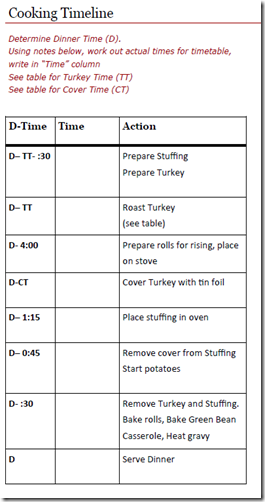 One year, I created a Thanksgiving Dinner standard. That is to say, I made a little brochure with all of our standard recipes and also a table to figure out the cooking times. Primarily, this is an aid in making dinner so we don’t get lost in all of the work. Additionally, I have had a few requests for “How do you make turkey dinner because I never did it before?”
One year, I created a Thanksgiving Dinner standard. That is to say, I made a little brochure with all of our standard recipes and also a table to figure out the cooking times. Primarily, this is an aid in making dinner so we don’t get lost in all of the work. Additionally, I have had a few requests for “How do you make turkey dinner because I never did it before?”
The Game
So, every year, we follow the standard. And, every year, I update the standard for the little things that we forgot to put on the list. This year, we also tried a new recipe for green bean casserole – it is made in a slow cooker. This makes it a little easier to manage all the stuff that has to go into the oven.
Win Condition
So far, the perfect turkey day continues to elude us. There is always something that we could have done better. Every year, we forget one little thing that we just “never forget.” From a standard perspective that remains a win, not quite a total victory.
Rulebook
Thanksgiving Dinner – the Brochure
